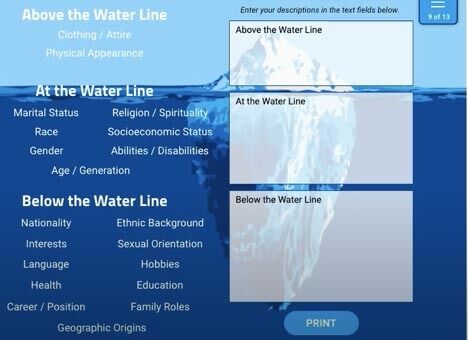With NEH support, faculty at Wayne State University led a professional development institute for K–12 educators that explored disability and identity in history, literature, and media. Each day, the virtual institute featured a humanities scholar, who shared their research from the perspective of their respective disciplines and led the group in analyzing disability and identity in the educators’ existing curricular materials. Educators left the institute with enhanced understandings of disability and identity, strategies for how to translate and implement what they learned into their curriculum, and a rich network of colleagues and resources.
Read More
“I understand disability much more broadly and deeply now. Further, I see disability as a culture into which people identify. This understanding radically reshapes my approach to teaching students with disabilities and framing disability within my classroom.”
–Program participant
The seminar first introduced disability identity and intersectionality as core concepts for exploration. Then, scholars guided participants through strategies for analyzing disability and identity and their representations in history, children’s literature, and contemporary visual and print media. For example, participants explored how to embed disability identity exploration into their history lessons and show its connection to larger historical and social themes. This hands- on practice using disability studies frameworks gave the participants a new way to think about how they approach lesson plans and foster discussions in their classrooms. In a survey immediately following the institute, one respondent wrote that the “rethinking of identity, power, and privilege that disability studies brings helped shift the way [they] think about thematic teaching.” Respondents planned to implement new materials related to disability identity into their classrooms and ask new questions of their existing materials such as “who’s voice is heard?” and “how is this story told?”
Facts & Figures
95%
of respondents agreed they were able to “engage with new content [they] had not previously”
Facts & Figures
70%
of respondents agreed the institute allowed them to “expand [their] active network of colleagues.
Last, the institute provided a wealth of resources that participants can continue to draw upon. Participants were connected with the Wayne State University library and learned about new documentaries, literature, articles, and websites that will support them in incorporating disability studies into the classroom. In addition to the resources at Wayne State, the participants also formed a collegial cohort among themselves. One survey respondent commented: “The small group sessions [with my fellow participants] were most valuable. I could connect with my teaching peers and speak about students and needs and how the content could be applied to them. [I gained] deeper insights into the topic based on the multitude of perspectives from everyone involved.”
